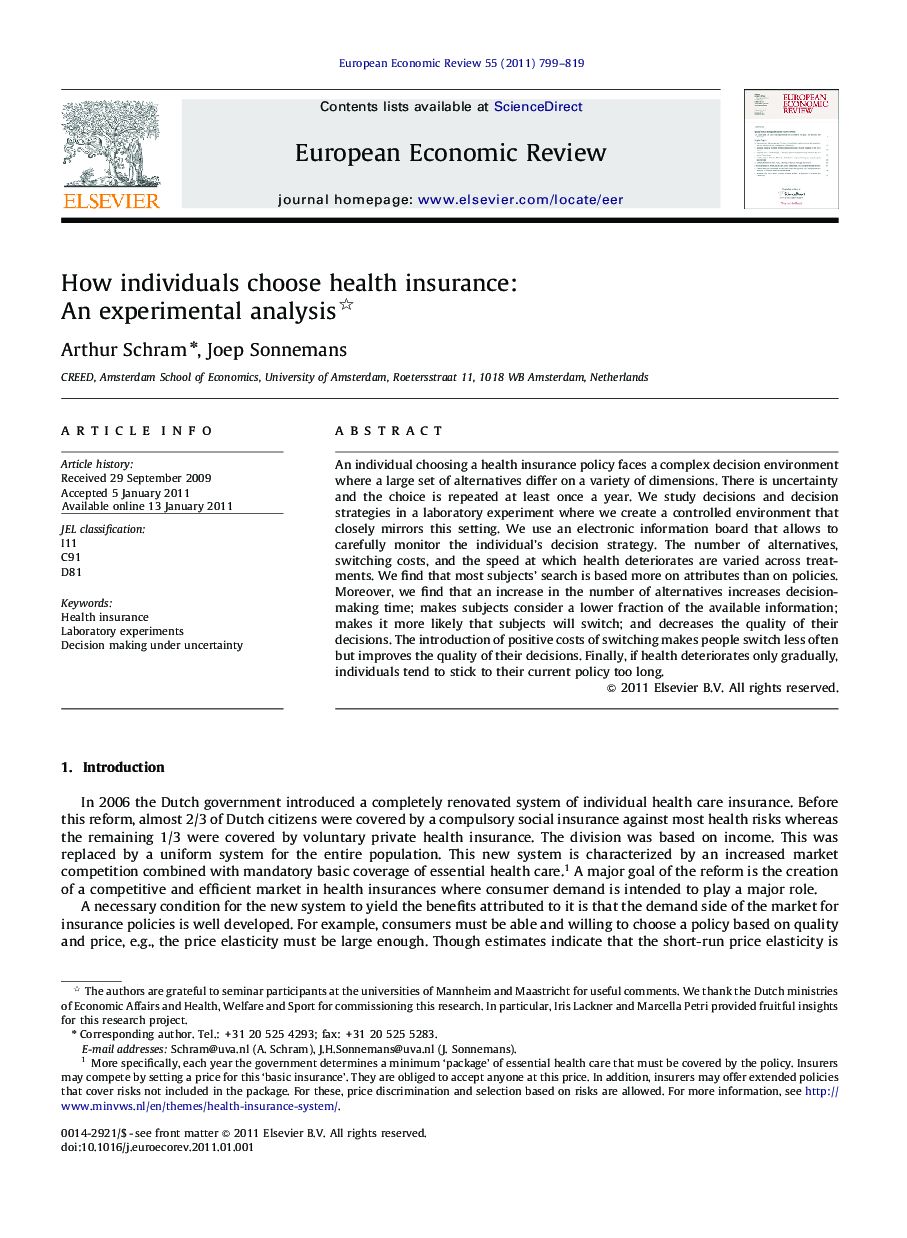| Article ID | Journal | Published Year | Pages | File Type |
|---|---|---|---|---|
| 5067302 | European Economic Review | 2011 | 21 Pages |
An individual choosing a health insurance policy faces a complex decision environment where a large set of alternatives differ on a variety of dimensions. There is uncertainty and the choice is repeated at least once a year. We study decisions and decision strategies in a laboratory experiment where we create a controlled environment that closely mirrors this setting. We use an electronic information board that allows to carefully monitor the individual's decision strategy. The number of alternatives, switching costs, and the speed at which health deteriorates are varied across treatments. We find that most subjects' search is based more on attributes than on policies. Moreover, we find that an increase in the number of alternatives increases decision-making time; makes subjects consider a lower fraction of the available information; makes it more likely that subjects will switch; and decreases the quality of their decisions. The introduction of positive costs of switching makes people switch less often but improves the quality of their decisions. Finally, if health deteriorates only gradually, individuals tend to stick to their current policy too long.
